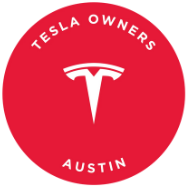Xpeng, a Chinese automaker, is making waves in the world of autonomous driving with its vision-based approach to robotaxis. While Tesla may be the most well-known player in this field, Xpeng has been making significant strides in the development of its autonomous driving technology.
At the IAA Mobility 2025 show in Munich, Candice Yuan, senior director and head of product at Xpeng’s Autonomous Driving Center, revealed that the company has shifted its focus away from lidar technology in favor of a vision-based approach. According to Yuan, Xpeng’s large language model is primarily trained using short videos captured from customer vehicles, forming the basis of its AI system. This approach, known as Vision, Language, Action (VLA), has proven to be more effective for Xpeng than integrating lidar data into its system.
Xpeng’s self-driving system, known as Navigation Guided Pilot (XNGP), is designed to offer a level of autonomy similar to Tesla’s Full Self-Driving (FSD) system. However, Xpeng believes that its end-to-end machine learning models have the potential to operate anywhere in China, showcasing the company’s ambitious vision for the future of autonomous driving.
While some companies, such as Waymo and Zoox, rely on lidar technology to train their AI systems, Xpeng has chosen to focus on a vision-based approach. Studies have shown that integrating lidar into AI systems can be complex and expensive, requiring extensive data labeling and calibration. Xpeng’s decision to forgo lidar in favor of a vision-based system highlights the company’s commitment to developing a more cost-effective and scalable solution for autonomous driving.
Xpeng’s CEO, Xiaopeng He, even tested Tesla’s FSD system in Silicon Valley and praised its performance. This led to a playful exchange between Xpeng and Tesla’s CEO, Elon Musk, with Xpeng inviting Musk to China to experience its XNGP system firsthand.
While Xpeng is not the only Chinese company pursuing a vision-based approach to autonomy, its progress in this field is certainly noteworthy. As the race for fully autonomous vehicles continues, Xpeng’s decision to focus on vision-based technology could pave the way for a new era of autonomous driving.
In conclusion, Xpeng’s innovative approach to autonomous driving, combined with its emphasis on vision-based technology, sets it apart in a rapidly evolving industry. As the company continues to refine its autonomous driving systems, it will be interesting to see how Xpeng’s vision-based approach shapes the future of self-driving vehicles.

